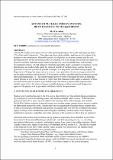Advanced Nuclear Energy Systems: Heat Transfer Issues and Trends
Author(s)
Corradini, M.L.
DownloadMain article (4.009Mb)
Metadata
Show full item recordAbstract
Almost 450 nuclear power plants are currently operating throughout the world and supplying about
17% of the world’s electricity. These plants perform safely, reliably, and have no free-release of byproducts
to the environment. Given the current rate of growth in electricity demand and the ever
growing concerns for the environment, the US consumer will favor energy sources that can satisfy the
need for electricity and other energy-intensive products (1) on a sustainable basis with minimal
environmental impact, (2) with enhanced reliability and safety and (3) competitive economics. Given
that advances are made to fully apply the potential benefits of nuclear energy systems, the next
generation of nuclear systems can provide a vital part of a long-term, diversified energy supply. The
Department of Energy has begun research on such a new generation of nuclear energy systems that
can be made available to the market by 2030 or earlier, and that can offer significant advances toward
these challenging goals [1]. These future nuclear power systems will require advances in materials,
reactor physics as well as heat transfer to realize their full potential. In this paper, a summary of these
advanced nuclear power systems is presented along with a short synopsis of the important heat
transfer issues. Given the nature of research and the dynamics of these conceptual designs, key
aspects of the physics will be provided, with details left for the presentation.